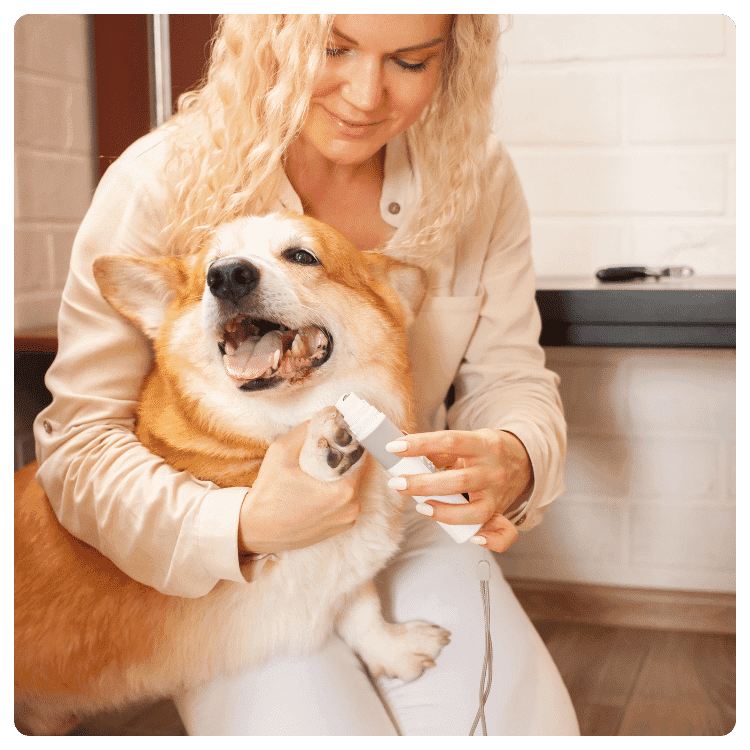
https://www.barkandwhiskers.com/2017-06-10-nl-pets-flakey-skin/
https://www.barkandwhiskers.com/p/6e05e210-6b9f-41da-bd4e-88823ad67926/
By Dr. Becker
Just like humans, dogs and cats can develop dry, flakey skin, sometimes referred to as doggy or kitty dandruff. Most cases of flakey skin in pets are caused by one or more of the following:
- Lack of grooming
- Too few or too many baths
- A nutritional deficiency
- An underlying medical condition
Problem: Lack of Grooming
Lack of grooming or insufficient grooming can result in a buildup of dead skin under your pet’s coat, especially in long-haired and double-coated dog breeds. If loose and dead hair isn’t removed on a regular basis, excessive flaking will accumulate as the dead skin mixes with the undercoat.
Cats normally self-groom away their dead skin and excess hair, but a long-haired cat, or an overweight or senior kitty, may not do a thorough job. Dead skin tends to accumulate across the back of the pelvis of obese cats, where they can no longer reach to groom. If your pet seems to have a lot of flaking in a particular spot, watch to see if she’s able to groom and remove hair in that area. If she can’t get to it, you’ll need to give her some help by brushing her regularly to pull away dead skin and hair.
Problem: Not Enough or Too Many Baths
Too many, or more commonly, too few baths can also be a reason for dry, flakey skin. It once was that people were warned not to bathe their pets at all, or very rarely, but that was back when shampoos were made with harsh, caustic ingredients. Too much shampooing with those first generation products was hard on both human scalps and pets’ skin, creating irritation and excessive flaking in both. These days, however, there are plenty of safe, gentle shampoos available for pets.
A good rule of thumb is that your dog or cat should be bathed as often as he needs it. Some dogs rarely need a bath, while others with oily or flakey skin and hair should be bathed at least weekly. The condition of your pet’s skin and coat should dictate how often he gets a bath.
Some cats, long-haired kitties in particular, also occasionally need baths. A greasy or sticky-feeling coat is a sign your cat needs a bath. When an overweight kitty can’t properly groom the back half of his body, baths are often necessary for sanitary purposes and to keep the skin healthy and free of infection. If you live in a dry climate, your pet may need fewer baths than dogs or cats living in areas with higher humidity.
As a general rule, the more humid the climate, the more skin irritation we see in pets, and the more often they need to be bathed. Bathing your pet every day is overdoing it, and can cause skin and coat dryness. Never bathing your pet, on the other hand, allows buildup of dead skin and hair. Select a gentle, organic shampoo specifically designed for dogs or cats. You might also want to follow up with an all-natural, species-specific conditioner to moisturize and condition your pet’s skin and coat.
Problem: A Nutritional Deficiency
In my experience, a dietary lack of omega-3 essential fatty acids is the No. 1 cause of dry, flakey skin in pets. Dogs and cats need an abundance of omega-3s in their diet to be optimally healthy. The manufacturing process involved in producing most commercial pet food destroys the nutritional benefit of omega-3s.
Even if you’re feeding a homemade diet, if you’re not following a nutritionally balanced recipe that calls for extra EFAs/omega-3 fatty acids, or unless you’re feeding fish on a daily basis (not recommended), your pet’s diet is probably unbalanced for fatty acids. Whether you feed a commercial diet or a homemade diet, you may need to supplement with essential fatty acids. My favorite is krill oil. Not only are omega-3s important for your dog or cat, so is the dietary ratio of omega-3s to omega-6s.
Most pet diets, whether purchased or homemade, are high in omega-6 fatty acids. Supplementing with additional omega-6s in the form of corn, olive, safflower or even flax oil, which contains some vegetable sources of omega-3s, but also omega-6s, can create an imbalance serious enough to cause skin problems.
Another healthy oil that can help improve your pet’s flakey skin is coconut oil. Coconut oil treatments can be very helpful in improving the integrity of flaking skin. They also support the lipid barrier, which makes your pet’s skin healthier and more resistant to pathogens like yeast and opportunistic bacteria.
This treatment can be used with both short- and long-haired dogs, but it will obviously be more challenging with a long-haired pet. It’s important to do coconut oil treatments on clean skin, so bathe your pet first and dry her thoroughly.
I recommend using 100 percent organic, cold-pressed and human-grade coconut oil. Apply the coconut oil to your pet’s body like a mask. It will not only help keep her skin soft, but will also improve the natural defenses of the skin. Coconut oil contains lauric acid, which supports the immune system whether taken orally or used topically.
Problem: An Underlying Medical Condition
Another potential reason for pet dandruff is an underlying medical problem. Both cats and dogs can develop metabolic conditions that inhibit the turnover rate of skin cells. Thyroid problems are a common culprit, especially hyperthyroidism in cats and hypothyroidism in dogs. Any health issue in a cat that causes her not to feel well can translate to a lack of regular or thorough grooming. Lots of ill kitties have excessive flaking.
Skin infections are another very common medical cause of flaking. Bacterial infections, fungal infections like ringworm and parasitic infections on the skin can all cause increased flaking in your pet. In fact, there’s actually a parasitic mite called “Walking Dandruff.” If your furry family member is dealing with dry, flakey skin, I recommend you work with your veterinarian to identify the root cause so you can resolve the issue and get your pet’s skin and coat back to a healthy condition.
- PetMD
Related Articles:
 Diagnosing Itchy, Uncomfortable Skin – What’s Going on With Your Pet?
Diagnosing Itchy, Uncomfortable Skin – What’s Going on With Your Pet?
 Is Your Pet Incessantly Itchy? Could Be 1 of These 2 Things
Is Your Pet Incessantly Itchy? Could Be 1 of These 2 Things
Comments (14)





